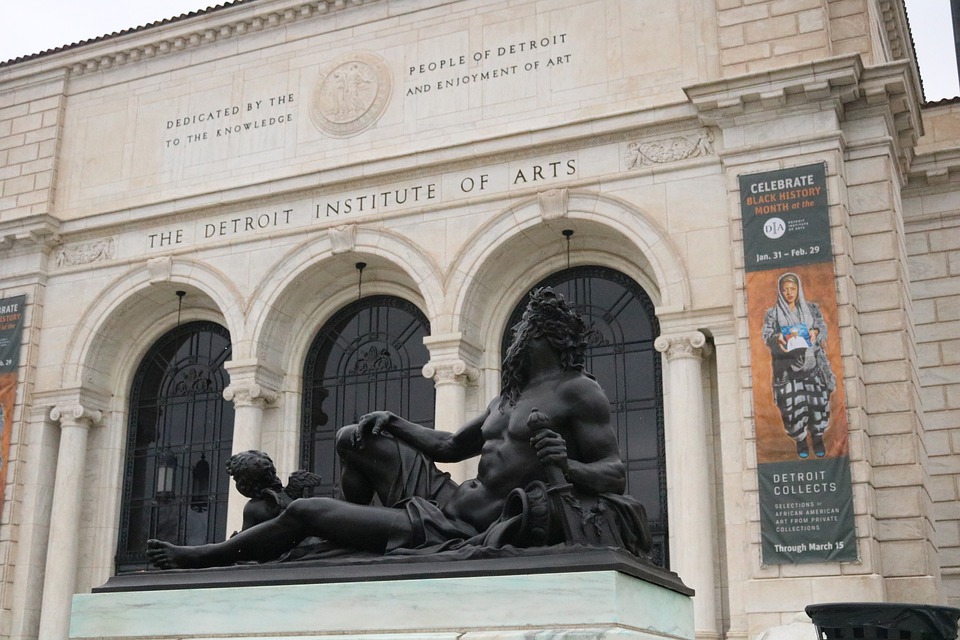The Detroit Institute of Arts is Detroit’s urban art museum. The museum holds more than 65,000 works of art spanning the entire history of art, from ancient Egyptian to modern.
The museum complex, located next door to Wayne State University, spans feet, making it the sixth-largest art museum in the United States. It is a major landmark in historic downtown Detroit and is listed on the U.S. National Register of Historic Places.
In 2013, the museum welcomed 594,267 visitors (102nd in the world). It hosts major art exhibitions and has a movie theater designed by architect Howard Crane. There is also an art store.
History
The museum was founded by James Scripps (1835-1906), founder of The Detroit News. Returning from a tour of Europe in 1881, Scripps persuaded many wealthy Detroiters to donate to the city the paintings that adorned their mansions. The Detroit Museum of Arts, styled after the French Middle Ages, was built to house the exhibit by 1888. In 1919 the museum changed its name to its present one.

The main benefactors of the museum throughout its history were Detroit automobile magnates Dodge and the Fords, particularly Edsel Ford. His wife’s nephew, Robert Hudson Tannehill, bequeathed to the museum a first-class collection of contemporary art. In 1932 Ford commissioned Rivera to decorate the museum building with the theme “Man and Machine.”
When Detroit declared bankruptcy in 2013, many creditors demanded a sale of the museum’s treasures as the depressed city’s most liquid assets. The auction house Christie’s prepared a report in December 2013 that valued the museum’s prized pieces at between $454 million and $867 million. Van Gogh’s Self-Portrait in a Straw Hat alone was valued at $150 million.
Detroiters developed a plan to save the museum from liquidation, requiring a financial infusion of hundreds of millions of dollars. Specifically, the crisis city manager suggested that Michigan’s auto giants do their part to save Detroit’s pride. As a result, a creditors’ satisfaction plan was adopted that did not include foreclosure of the museum’s collection.
Main Building
As the number of exhibits grew, the need for a new building arose, and in 1920 Detroit announced an architectural competition. A committee that included Edsel Ford and architect Albert Kahn declared Philadelphia architect Paul Philippe Cret and Zantzinger, Borie and Medary the winners.
The Beausard style building, with predominantly Neo-Renaissance features, was begun on June 26, 1923 and opened its doors to the public on October 7, 1927. The facade is made of white marble. In 1966 and 1971, the southern and northern wings were added to the historic building, respectively. Opposite the museum is the Detroit Public Library’s melomarble building, in the same style as the museum.
